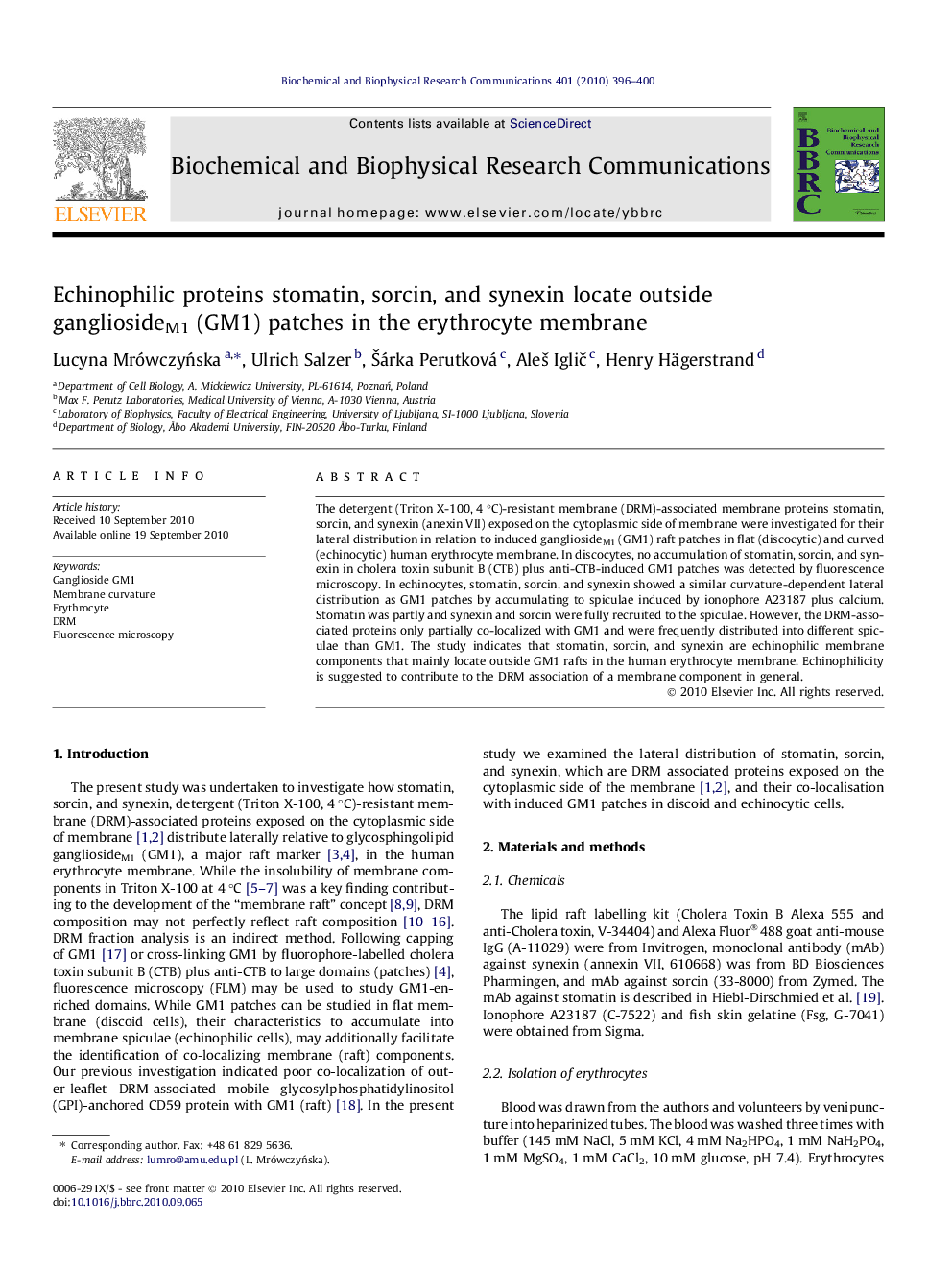| Article ID | Journal | Published Year | Pages | File Type |
|---|---|---|---|---|
| 1931309 | Biochemical and Biophysical Research Communications | 2010 | 5 Pages |
The detergent (Triton X-100, 4 °C)-resistant membrane (DRM)-associated membrane proteins stomatin, sorcin, and synexin (anexin VII) exposed on the cytoplasmic side of membrane were investigated for their lateral distribution in relation to induced gangliosideM1 (GM1) raft patches in flat (discocytic) and curved (echinocytic) human erythrocyte membrane. In discocytes, no accumulation of stomatin, sorcin, and synexin in cholera toxin subunit B (CTB) plus anti-CTB-induced GM1 patches was detected by fluorescence microscopy. In echinocytes, stomatin, sorcin, and synexin showed a similar curvature-dependent lateral distribution as GM1 patches by accumulating to spiculae induced by ionophore A23187 plus calcium. Stomatin was partly and synexin and sorcin were fully recruited to the spiculae. However, the DRM-associated proteins only partially co-localized with GM1 and were frequently distributed into different spiculae than GM1. The study indicates that stomatin, sorcin, and synexin are echinophilic membrane components that mainly locate outside GM1 rafts in the human erythrocyte membrane. Echinophilicity is suggested to contribute to the DRM association of a membrane component in general.
Research highlights► DRM-associated proteins stomatin, sorcin, and synexin locate outside GM1 patches in discoid erythrocytes. ► GM1 patches induced in discoid erythrocytes serve as nucleation centres for the formation of spiculae. ► Stomatin, sorcin, and synexin show a similar curvature-dependent lateral distribution as GM1. ► DRM-associated proteins show only partial co-localization with GM1 patches in echinocytic erythrocytes. ► Echinophilicity is suggested to contribute to the DRM association of a membrane component.
